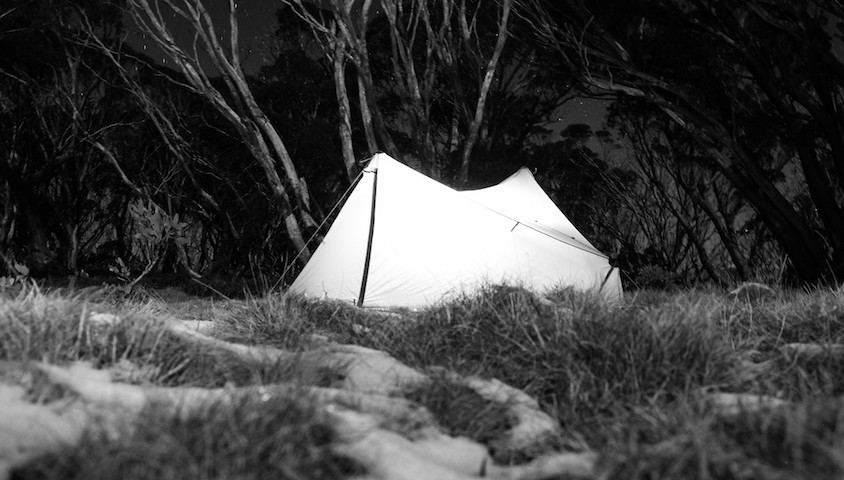Tarptent Stratospire 2 ($500)
After months – probably over a year – of looking at ultralight tents, weighing the benefits of each and analysing the specifics, Tarptent had well and truly caught my eye.
I liked the idea of supporting a ‘cottage industry’ especially one that hand manufactures its products. Henry Shires, the founder of Tarptent, answered my queries and was friendly and efficient in helping me decide which model to buy. My requirements were for an affordable tent, ideally weighing less than one kilogram and quick to set up. Until now, cheap tents had done the job, but moving away from home and friends meant I wanted a tent of my own and one I could carry easily myself.
I’d had a brief encounter with a Tarptent on the Great Southwest walk in Victoria. But Tarptents are relatively rare in Australia and I couldn’t recall the brand of the tent that I’d seen. The men I’d seen using the tent sold it quite well: a shelter that uses hiking poles so tent poles are not required and the inner stays inside the outer shell, keeping dry during rainy set ups. What more could you want? Oh, two vestibules so each person has their own entrance? Well, the Stratospire 2 has all of that. While Tarptent offers a range of models, the Stratospire 2 is big enough for two people to sleep comfortably and makes for a spacious setup for one person (cover area is 2.9 square metres, with an internal height of 127 centimetres). There is an option to buy tent poles or to use hiking poles as suits the individual. The tent can be dismantled and set up individually either just the net or fly or both together. There are two very spacious vestibules and my personal favourite, a very quick and easy setup – easy enough for one person to manage.
My first use was in a basecamp setting, but it didn’t take long to get out on the trails. Camping locations so far have been a variety of base and hiking camping, including a warm and cosy snow camp. Everything has lived up to my expectations so far, with the weight of the tent so delightfully minimal.
My particular configuration includes a tyvec groundsheet ordered from Tarptent, which keeps the dew from seeping through and, in my opinion, protects the floor from sharp objects. The vestibules on both sides can be rolled back completely, giving a fantastic view from a comfortable bed. The silnilon material the fly is made from loosens in cool weather, meaning the ropes need to be tightened at night and in rainy conditions. Tarptent has an easy solution to this, requiring the user to merely lean out of bed and tugging on a cord to tighten the whole structure.
The minimal requirement for pegs is six, however I carry at least four extras in case of windy weather. In the case of such weather, there are multiple points to tie down from and the option to use a second pair of hiking poles to doubly secure the tent. I have already emphasised the large space of the tent for such a minimal weight, but there is at least one ‘cost’ as a result. Bush camping can be problematic, as the ground area required is quite large. However you could get away with pitching the ground area over flat terrain and having bumps and bushes in the vestibule area if necessary.
Tarptent offers two versions of the inner: either a fully mesh or a partial ‘solid’ inner providing a little more warmth.
Have a squiz at the Tarptent website if you’re curious about other models, there are options to suit everybody. In my opinion the only thing Tarptent lacks is an easier option to buy from Australia, but maybe that will change. My hiking life is just beginning, and with some long hikes on the agenda it looks like the Stratospire 2 has got the job of coming along for the ride.
An abridged version of this reader review appeared in Wild issue 156. Subscribe today to receive your copy.



